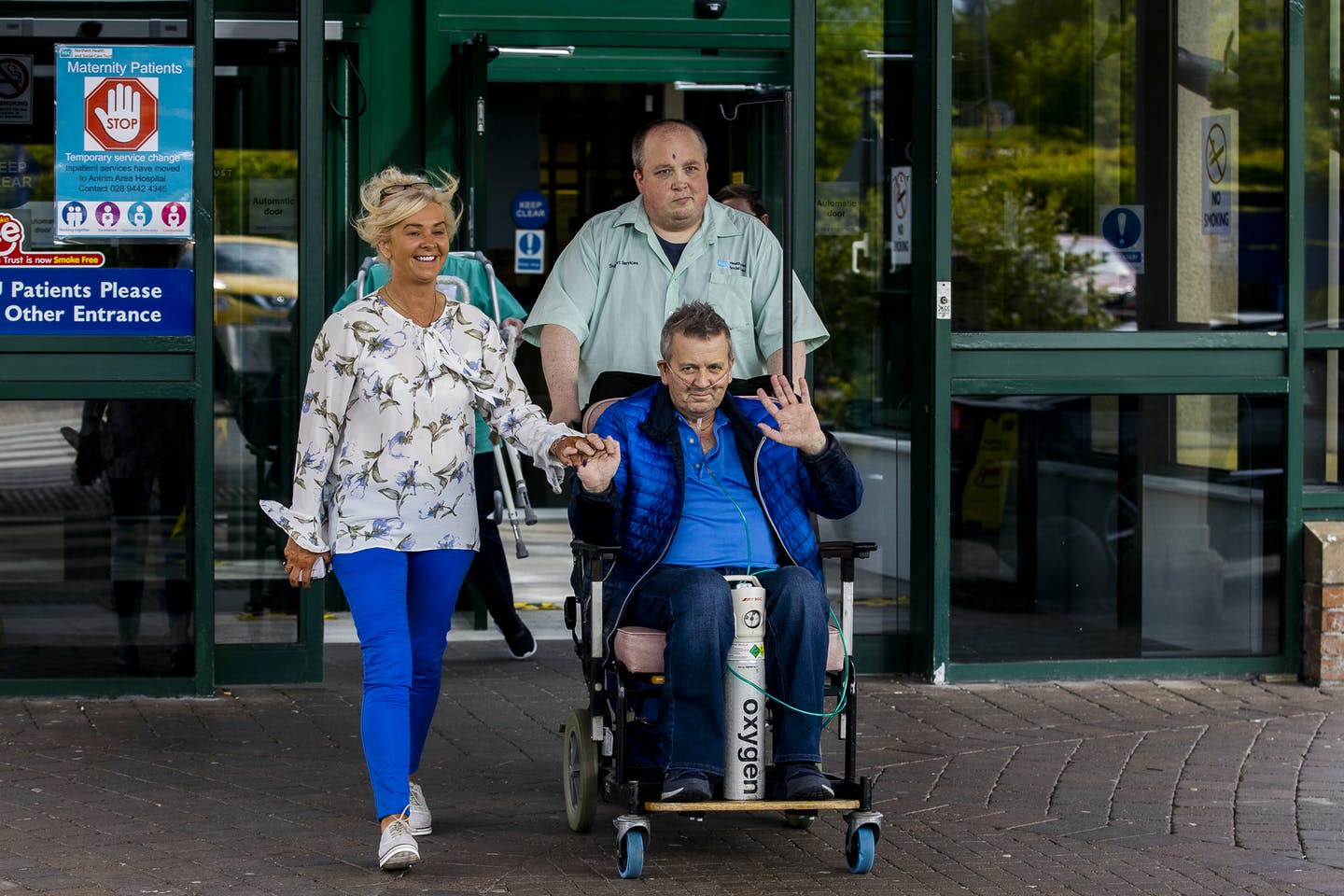With more than 2 million cases in the US. USA Since the coronavirus pandemic began in late December, there are now many people who have recovered from COVID-19. At the same time, there have been reports of people continuing to have long-term side effects from the infection. I am a teacher and doctor and I specialize in infectious diseases of adults. Not only do I care about patients with bacterial, parasitic, and viral infections, including COVID-19, but I actively teach and conduct research on diseases that cause infectious pathogens.
Here is a summary of what is known today about the recovery of COVID-19, and where there are important gaps in our knowledge. Much of this information, obtained from studies that began after the 2003 SARS outbreak, is important to those who are recovering and their family and friends who need to know what to anticipate.
Related video: Blood type, genes linked to COVID-19 severity
Confusion or post-intensive care syndrome
In the most seriously ill patients receiving ICU care, there is a substantial risk of delirium. Delirium is characterized by confusion, difficulty paying attention, reduced awareness of the person, place, and time, and even the inability to interact with others.
Delirium is not a specific complication of COVID-19, but unfortunately it is a common complication of ICU care. Risk factors in addition to being in the ICU include advanced age and pre-existing diseases. Some studies say that up to 75% of ICU treated patients experience delirium. The problem is not just with confusion during hospitalization, but for months afterward. For example, at three and nine months after discharge, many of those who recovered still had difficulties with short-term memory, the ability to understand written and spoken words, and learn new things. Some even had a hard time knowing where they were and what today’s date was. And, executive function scores were significantly worse in those who had delirium.
Doctors are putting considerable effort into reducing delirium in ICU patients. Approaches that may help include reducing sedative use, repeated patient reorientation to the date, time, and location, early mobilization, noise reduction, and cognitive stimulation.
Lungs: will there be chronic respiratory distress?
The most seriously ill patients with COVID-19 often experience pneumonia and acute respiratory distress syndrome, or ARDS, while ill. Doctors have not followed patients who have recovered from the new coronavirus long enough to know if there will be long-term respiratory problems.
However, a study of health workers in China who contracted SARS, caused by the SARS-CoV coronavirus that circulated during the 2003 outbreak, is reassuring. Lung damage (as measured by interstitial changes seen on CT scans of lung and lung function test results) was largely healed within two years of the disease.
Smell and taste
Most COVID-19 patients experience a loss of taste and smell. Only a quarter of the patients had noticed any improvement in a week, but by 10 days most of the patients had recovered.
Post infection fatigue syndrome
While it may be too soon to know again, in the case of the original SARS outbreak, almost half of the survivors interviewed more than three years after recovery complained of fatigue.
The Centers for Disease Control and Prevention criteria for diagnosing chronic fatigue syndrome were met in a quarter of COVID-19 patients. It is likely to be important to target mental health interventions to COVID-19 survivors to help them cope with a prolonged convalescence characterized by fatigue.
Blood clots
Blood clots can arise in up to a quarter of critically ill patients with COVID-19. Blood clots can cause serious long-term complications if the clots break off the blood vessels and migrate to the lung and cause a pulmonary embolism or go to the brain and cause a stroke.
To prevent clot formation, doctors are now prophylactically implementing anticoagulants when there is an increase in the concentration of D-dimer, which is a fragment of fibrin, a protein that causes blood to clot.
Heart
In one study, inflammation of the heart muscle, called myocarditis or cardiomyopathy, was observed in one-third of severely ill COVID-19 patients. Arrhythmias, an irregular heartbeat, are also seen. It is not known whether this is due to direct heart infection or secondary to stress caused by the inflammatory response to this infection.
Most importantly, the long-term consequences for survivors are not understood.
Diabetes
Diabetics are at increased risk for severe COVID-19, which can be attributed in part to an overreaction of the immune response to infection.
But the COVID-19 interaction and diabetes can also go in the other direction. Glucose elevations are seen in severe cases of COVID-19 in some patients with no history of diabetes. Because the virus interacts with the angiotensin-converting enzyme 2, or ACE2, in human cells, it is possible that changes in ACE2 activity may be a cause of diabetes in patients with the novel coronavirus. In any case, it will be important in the long run to follow up.
The bottom line is that the new coronavirus infection has profound effects on many different organ systems in the body. The good news is that we expect the damage caused by COVID-19 to heal in the vast majority of patients. However, it is important to appreciate that some long-term conditions can be anticipated and prevented or managed to benefit patients.
[[[[Experience in your inbox. Sign up to receive The Conversation newsletter and get expert opinions on today’s news, every day.]This article is republished from The Conversation, a non-profit news site dedicated to sharing insights from academic experts.
Read more:
William Petri receives funds from the NIH and the Bill and Melinda Gates Foundation.
